Search Results
Viewing: 1-344 of 344 | All
Article
Birth Control: Emergency Contraception
This Helping Hand™ is about different forms of emergency contraception and when to use them. Your doctor or health care provider can help you choose the best one.
Molluscum
Molluscum are smooth, pearly, skin-colored, benign bumps on the skin. They begin as small bumps and they may grow as large as a pencil eraser.
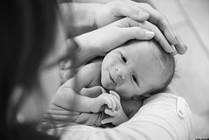
Blog
Hand Containment: How Gentle Touch Can Calm Your Baby
Human touch is healing. A warm embrace, a hand to hold and even a gentle touch on the arm can help most of us during times of distress. Holding, and the expression of care and emotional support through touching, are the main ways that infants learn to feel safe and secure.
Article
Scar Management
Does your child have a scar forming? This Helping Hand can walk you through all of the scar management techniques.
Article
Warts: Liquid Nitrogen Treatment
What to expect if your child is having a liquid nitrogen treatment to remove a wart.
Article
Check-ups for Teens in Out-of-Home Placement
Teens in foster or kinship care have unique needs. They are learning life skills like how to make decisions on their own. Teens also have many concerns about their health, relationships with friends, and privacy.
Deep Vein Thrombosis (DVT)
Deep Vein Thrombosis is a blood clot that has formed in a large blood vessel. It may completely or partially block the blood flow in that vein. Symptoms of DVT include pain, swelling and feeling warm. In most cases, a DVT will be treated with an anticoagulation medicine.
Article
Marijuana
Marijuana (also known as cannabis, weed, or pot) is the leaves, stems, seeds, and dried, crushed flowers of a cannabis plant. There are over 100 chemicals in the cannabis plant called cannabinoids. The most common cannabinoids are THC and CBD.

Condition
Ganglion Cysts
A ganglion cyst is a fluid-filled lump under the skin, often over a joint or in a tendon in the hand or wrist. If the cyst appears on top of the wrist, it is called a dorsal wrist ganglion cyst. A cyst on the palm side of the wrist is a volar wrist ganglion cyst. These cysts are usually harmless.
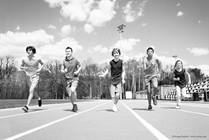
Blog
The Importance of Proper Running Form for Young Athletes
Much like teaching a young golfer the proper swing technique, young runners should be guided to develop good running form from the start. Doing so not only keeps their joints healthy, but it also improves their overall performance.
Article
Birth Control: Progestin-Only Contraceptive Pills
Progestin-only contraceptive pills are a form of daily birth control that contains the hormone progestin. This method does not contain estrogen. Progestin is much like a hormone made naturally in your body.
Post-Thrombotic Syndrome (PTS)
Post-Thrombotic Syndrome or PTS can occur when there are changes in a blood vessel after a blood clot is formed.
Ovarian Cyst
An ovarian cyst s a fluid filled sac in or on the surface of an ovary. It often forms during or after ovulation.
Optic Gliomas
Childhood optic pathway glioma is a slow-growing brain tumor that forms along the optic nerve. Optic gliomas are the most common type of brain tumor in children under the age of 10.
Article
Speech and Communication Evaluations for Babies with Hearing Loss
Babies begin communication as early as birth. This takes many forms before the actual use of words. Most babies learn non-verbal ways to make their wants and needs known.
Leukemia
This Helping Hand™ covers leukemia, the most common form of childhood cancer. Leukemia is a cancer of the bone marrow, which is the tissue found inside many of the bones of the body. There are two main types of childhood leukemia: acute lymphocytic leukemia (ALL) and acute myeloid leukemia (AML).Bartholin's Cyst
A Bartholin’s cyst is a pocket of fluid that forms in the tissue surrounding the vaginal opening. Bartholin glands create fluid that lubricates the vagina.
Article
Dental: Teeth and Gum Care for Infants and Toddlers
How to practice teeth and gum care before your child's first tooth appears.
Impetigo
Impetigo is a common skin infection caused by bacteria.
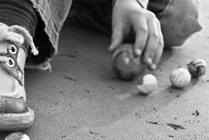
Condition
Lichen Striatus
Lichen striatus is a rash that appears as pink or lightly-colored, scaly, flat bumps. Over time, these bumps come together to form a line or band on the skin.
Article
Nail Changes
Nails are hardened skin cells that protect and support the tissues in our fingers and toes.
Article
Poison Prevention Resources
Access poison prevention materials and program resources for the general public and for community-based organizations.
Article
Birth Control (Contraceptive) Options
Birth control is safe, easy to use, and has few side effects. Finding the right method for you can help you prevent pregnancy until you want to become pregnant.
Article
Prescription Medicines
To take care of your child’s health, you need to know how to fill prescriptions. Most prescriptions for medicines may be filled at a local pharmacy.
Article
Auditory Brainstem Response (ABR) with Sedation or Anesthesia
This Helping Hand™ explains the process of an auditory brainstem response (ABR) with light sedation or anesthesia.
Article
Provider Information
Access resources for referring providers and homecare health professionals.
Article
Getting Supplies and Equipment
When your child needs special supplies, a lot of them, or equipment that is not at your pharmacy, a durable medical equipment (DME) company can fill the prescription.

Condition
Leukemia (ALL and AML)
Leukemia (ALL and AML) is the most common form of childhood cancer. It affects the tissues of the body which make the blood cells and the bone marrow. When leukemia strikes, the body makes an abundance of abnormal white cells that invade the marrow and crowd out the normal healthy blood cells.
Turner Syndrome (Genetic Disorder)
Turner syndrome is a genetic disorder that affects people born female.
Article
Tests, Procedures and Treatments
This section has some more in depth information about the tests all babies receive before leaving the hospital.
Article
Caring for Your Child After a Burn Injury
This Helping Hand™ explains the special care needed if your child has a burn injury.
Article
Mandibular Distraction Osteogenesis
Mandibular Distraction Osteogenesis (MDO) is a surgery done for infants with Pierre Robin sequence. MDO lengthens the jaw to help open the airway so the baby can breathe safely and comfortably on their own.

Condition
Keratosis Pilaris
Keratosis pilaris is a dry skin type. It looks like dry, rough, small bumps that are flesh-colored or pink and can feel like sandpaper or chicken skin. It is not contagious and is usually not itchy. The most common areas for these bumps are on the back of the arms, front of the thighs and the face.
Article
Universal Newborn Hearing Screening (UNHS)
Learn more about the universal newborn hearing screening.
Article
Social Security Disability Insurance (SSDI)
Social Security Disability is a government program that gives money to people who cannot work because of a medical issue that is expected to last at least one year or result in death.
Article
Cardiac Catheterization: Care at Home (Adult)
You have had a cardiac catheterization. Learn how to care for the cath site.

Condition
Acne
In this Helping Hand™, we discuss the causes and treatment of acne. Acne is a skin condition that happens when hair follicles become plugged with oil and dead skin cells. It causes whiteheads, blackheads, or pimples.
Article
Fluorescein Angiography
Fluorescein Angiography is a simple diagnostic test. It involves fluorescein dye that is either injected into the bloodstream through a vein in the arm or taken by mouth as a drink.
Article
Preparing the Skin Before Surgery
Bathing your child before surgery will help reduce the number of germs on their skin. Fewer germs on the skin means less chance of an infection after surgery.
Article
Surgery Centers Home Preparation Westerville and Main Campus
Prepare for your child's surgery with this Helping Hand
Ringworm of the Body (Tinea Corporis)
Ringworm, also known as tinea corporis) is a contagious infection of the skin caused by a fungus. The infection starts as a rash with tiny red pimples. The pimples slowly spread and form a round or oval ring. A single patch of ringworm can be treated with an over-the-counter antifungal cream.
Article
Birth Control Pills
Combination oral contraceptive pills are a form of daily birth control that has the hormones estrogen and progestin.
Article
Rabies Vaccine Treatment
This Helping Hand™ is about the treatment for rabies. Rabies is a serious disease mostly caused by wild animals. Here we'll go over what steps to take if you're bitten.
Article
Moving from Pediatric to Adult Care: Prescription Medicines, Supplies and Equipment
To take care of your own health, you need to know how to fill prescriptions. Most prescriptions for medicines can be filled at a local pharmacy. You may also get them from a mail order pharmacy if your insurance allows. Your prescription insurance will use one specific mail order pharmacy.
Article
Pasteurized Donor Milk for Your Hospitalized Baby
This Helping Hand™ is about what pasteurized donor milk is and why some babies may need it. It also talks about the process of pasteurizing and how you can become a donor.
Abusive Head Trauma
Abusive head trauma (AHT), formerly called Shaken Baby Syndrome, is a form of child abuse.
Omphalocele
In normal development before birth, the intestines are formed in a sac around the umbilical cord, and then move into the baby's body. If the intestines stay in the sac (and do not move into the baby’s body) it is called an omphalocele.
Article
Patient Safety in the Health Care Setting
We are committed to giving quality health care to your child and keeping them safe while here. Parents or legal guardians play a vital role in the effort by being actively involved and informed.
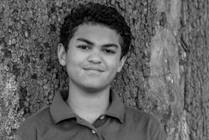
Condition
Gynecomastia
This Helping Hand™ is about gynecomastia and explains what it is, how it is treated and what the symptoms are.
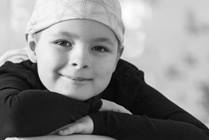
Condition
Lymphoma
Lymphoma is cancer which arises in the lymph system, the body’s circulatory network for filtering out impurities. There are two broad varieties, Hodgkin’s disease, and Non-Hodgkin’s lymphoma.
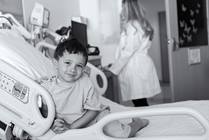
Article
Wilms' Tumor Treatment Options
The types of treatment used most often to treat childhood cancer are surgery, chemotherapy, radiation therapy, and bone marrow transplantation. The goal of treatment is to destroy the cancer cells. Learn more about treating Wilms' tumor.
Article
Asthma and Steroid Use
Asthma is when the airways, or bronchi, in the lungs overreact to certain things.
Kawasaki Disease
Kawasaki Disease is the most common cause of acquired heart disease in the United States and Japan. The disease can cause blood vessels to become inflamed or swollen throughout the body. It is more common in boys and in Asians and Asian-Americans.
Article
Tonsillectomy and Adenoidectomy
This Helping Hand™ is about having a tonsillectomy and adenoidectomy (T & A) surgery. During this surgery, the tonsils and adenoids are taken out at the same time.
Article
Cardiopulmonary Resuscitation (CPR): Puberty to Adult
This Helping Hand™ is a guide to general CPR for children that have gone through puberty and adults. It is not intended to be used as training material or in place of formal CPR training.
Article
Tracheostomy: What It Is and When It Is Needed
Learn what a trachestomy is and what it is used for.
Osteosarcoma
Osteosarcoma is a cancer of the bone. It starts in immature bone cells that normally form new bone tissue.
Article
Personal Hygiene
The body performs better when it is clean and healthy. Good personal hygiene should include clean skin and care of the mouth, teeth, hair, hands, feet and nails.

Condition
Tenosynovial Giant Cell Tumors
There are three kinds of tenosynovial giant cell tumors (TGCTs). One type grows in the tissue that lines the joints (synovium). The second kind grows in the area that cushions the joints and tendons (bursa). The third type grows in the lining around the tendons (tendon sheath).
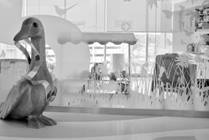
Condition
Measles
This Helping Hand™ explains what measles is, how it spreads, signs and symptoms, treatment options, prevention, and when to seek help.
Article
Brachial Plexus Injury
The brachial plexus is a group of nerves that starts in the spinal cord at the neck and controls the hand, wrist, elbow and shoulder. It can be injured during birth.
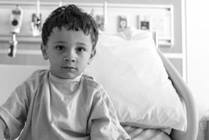
Condition
Bronchopulmonary Dysplasia
This Helping Hand™ covers bronchopulmonary dysplasia (BPD), which is a term used to describe long-term breathing problems for premature babies. It involves abnormal development of the lungs, and sometimes the lungs are scarred and inflamed.
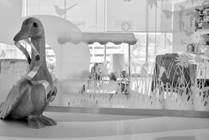
Condition
Ewing Sarcoma
This Helping Hand™ explains Ewing sarcoma which is a form of cancer that usually starts in the bone. The tumors, sometimes referred to as the Ewing Family of Tumors, include Ewing sarcoma, atypical Ewing sarcoma and peripheral primitive neuroectodermal (PNET) tumor of the bone.
Article
Buccal Medicines: Giving Buccal Medicines
A buccal medicine is a medicine given between the gums and the inner lining of the mouth cheek.
Anorectal Malformation (ARM) or Imperforate Anus: Male
In this Helping Hand™ document, we discuss the symptoms and treatment of anorectal malformations (imperforate anus) in males. Different types of ARMs include perineal fistula, rectourethral fistula, cloaca and no fistula. Young boys may be at risk for urology, spine and sacrum problems.
Article
Resources at Home
We want to help you take care of your baby once he/she is discharged. These resources cover everything from fevers to colic.
Polydactyly
Polydactyly refers to extra fingers or toes that are present at birth. Polydactyly usually is genetic. These extra digits can be made up of one or more of the following: Skin, soft tissue and bone with joint, ligament, and tendon.
Article
Cardiopulmonary Resuscitation (CPR): Age 1 to Puberty
This Helping Hand™ is a guide to general CPR for children that are over 1 year old and have not gone through puberty. It is not intended to be used as training material or in place of formal CPR training.
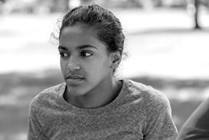
Condition
H. Pylori
H. pylori, also known as Helicobacter pylori, is a bacteria that infects the stomach. Although common, this infection rarely shows any signs or symptoms.
Pulmonary Embolism
A pulmonary embolism is a blood clot that travels to the blood vessels in the lungs. You may hear a pulmonary embolism referred to as a “PE.”

Condition
Polycystic Kidney Disease
Learn about the two different types of Polycystic Kidney Disease.
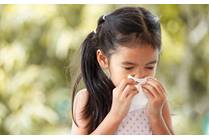
Your Summer Safety Guide
Whether you are at home, on the road or in the water, you'll find the information you need for a fun and safe summer. Nationwide Children's is always just a click or call away.
Article
Cardiopulmonary Resuscitation (CPR): Infants
This Helping Hand™ is a guide to general CPR for infants. It is not intended to be used as training material or in place of formal CPR training.
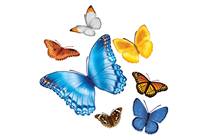
Hemangiomas
This Helping Hand™ explains different types of hemangiomas and how they're benign (noncancerous).
Anorectal Malformation (ARM) or Imperforate Anus: Female
In this Helping Hand™ document, we discuss the symptoms and treatment of anorectal malformations (imperforate anus) in females. Different types of ARMs include perineal fistula, vestibular fistula, cloaca and no fistula. Young girls may be at risk for urology problems and gynecology problems.

Your Guide to Respiratory Season
It’s that time of year for tissues, sniffles and sore throats. Winter brings colds, flu and respiratory ailments that spread quickly at home, school and work. Find the information you need about seasonal bugs right here at your fingertips.
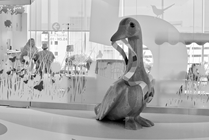
Condition
Enuresis (Bedwetting)
Enuresis is the medical term for wetting the bed. It means a child urinates without meaning to. Treatment usually means helping a child to form habits that will allow him to control his need to urinate.

Condition
Gonadal Dysgenesis
Gonadal dysgenesis, also known as 46XY gonadal dysgenesis and Swyer syndrome, is a condition in which the ovaries or testes (gonads) did not form the right way during pregnancy. Treatment may include surgery or hormone therapy.
Article
Upper Endoscopy With General Anesthesia
This Helping Hand™ is about how a doctor or health care provider uses an upper endoscopy to look for signs of redness, swelling, bleeding, ulcers, or infections.
Article
Neurogenic Bowel Regulation
A child who has a neurogenic bowel cannot control when he or she has a bowel movement. Bowel control may not be possible, but bowel regulation can be done by following a daily schedule.
Hirschsprung Disease (HD)
In Hirschsprung disease, the nerves in the colon, also known as the large intestine or bowel, that move stool forward did not form. Hirschsprung disease can affect a small part of the colon or the entire colon. In rare situations, it can move into the small intestine, as well.
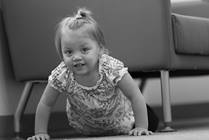
Patent Ductus Arteriosus (PDA)
The ductus arteriosus is a blood vessel that is formed during fetal growth to provide blood flow between two of the major arteries in the baby’s body while in the womb.
Article
Bronchoscopy (Flexible Bronchoscopy and Bronchoalveolar Lavage)
What to expect and how to prepare for your child's flexible bronchoscopy and bronchoalveolar lavage .
Clavicle Fracture
A clavicle fracture is common in children after a collision or fall onto the shoulder. Most clavicle fractures that occur in children can be treated without surgery.
Hodgkin Lymphoma
Hodgkins Lymphoma (also known as Hodgkin’s Disease) is a form of cancer of the lymphatic system. The lymphatic system is a part of the circulatory system. It plays a main role in fighting infection. It is made up of hundreds of lymph nodes.
Staphylococcus - Scalded Skin Syndrome (SSSS)
Staphylococcus-Scalded Skin Syndrome is a skin infection caused by a bacteria called Staphylococcus aureus. This infection produces a toxin that can affect skin all over the body.

Condition
Adnexal Cysts
Adnexal cysts are fluid-filled structures that can develop in the fallopian tubes and ovaries. They are usually caused by hormonal stimulation or bleeding at the time of ovulation.
Resources For Providers
Access resources for referring providers' patients and practices.
Article
Cardiac Catheterization - Care at Home (Pediatric)
Your child has had a cardiac catheterization. Learn how to care for the cath site and when to call your cardiologist.
Article
Water Soluble Fiber
Water soluble fiber is commonly used with CCPR medical regimens. This fiber will help maintain a good balance between stool frequency and consistency to help your child be continent.
Article
Radiation Therapy
This Helping Hand™ goes over the process of radiation therapy and what to expect.
Article
Pulse Oximetry
A routine test called Pulse Oximetry can help identify most infants with critical congenital heart disease.

Blog
Practicing Positive Discipline
It is important to fully understand the risks of hitting as a form of discipline as well as the lack of efficacy when compared to other strategies. We encourage parents to seek out positive forms of discipline whenever possible.
Article
Catheterization: Self-Clean Intermittent - Female
Learn how clean intermittent catheterization is done by putting a tube through the urethra into the bladder for females.
Article
Echocardiogram With Sedation or Anesthesia
This Helping Hand™ is about why some children may need special medicine when getting an echocardiogram done. This test, also called an echo, is an ultrasound of the heart.
Article
Bone Health and Epilepsy
Children who take medicine for seizures due to epilepsy may be at higher risk for weak or breaking bones.

Blog
What Is an Ovarian Neoplasm?
Ovarian neoplasms happen when there is an abnormal mass of tissue forming on the ovary with cells growing and dividing more quickly than they should.
Article
Catheterization - Self-Clean Intermittent - Male
Clean intermittent catheterization is done by passing a tube through the urethra into the bladder. Catheterization empties urine from the bladder.

Condition
Alopecia Areata
This Helping Hand is about hair loss related to alopecia areata. It also discusses diagnosis and treatment.

Blog
The Dangers of Secondhand Smoke
Every day, millions of children are exposed to secondhand smoke. Kids are also often exposed to “thirdhand” smoke, which comes from toxins that build up over time on surfaces exposed to smoke.
Article
Colonoscopy with General Anesthesia: Teens and Adults (Over 88 Pounds)
This Helping Hand™ is about how colonoscopies are done, how to prep for one, and what to expect for teens and adults.
Article
Colonoscopy with General Anesthesia: Children (44 to 88 Pounds)
This Helping Hand™ is about how colonoscopies are done, how to prep for one, and what to expect for children.
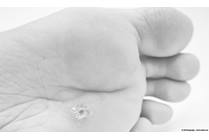
Blog
Warts: What They Are and How to Treat Them
Warts are non-cancerous skin growths caused by a virus and can vary in size and appearance. They are spread person-to-person through touch and typically appear on the hands and feet.

Blog
Baby Registry Series: Breastfeeding and Bottle-feeding
Breast or bottle, baby has to eat! Whichever you choose, you’ll want to put a few things on your wish list.
Pavlik Harness
Does your child wear a pavlik harness? This Helping Hand can aid you in day to day activities with your child in a pavlik harness.
Ear Infections (Otitis Media)
Ear infections, also known as otitis media, occur when the middle ear is infected or inflamed. There are two main types of otitis media: acute otitis media with effusion (fluid in the middle ear space) and chronic otitis media with effusion.

Blog
Breastfeeding in the NICU: How to Solve a Unique Challenge
Note: We use the term “breastfeeding” to encompass all forms of lactation, including direct breastfeeding, chestfeeding, and providing expressed human milk in a bottle.

Blog
Thumb Surgery: How Hand Surgeons Can Build a Thumb
As a hand surgeon who works specifically on kid-specific hand and arm issues, I get the chance to build a more functional thumb that they can use for the rest of their lives.

Condition
Constipation: Infant
This Helping Hand™ covers constipation in infants less than one year of age. It is common, but it can be a concern for parents. Signs of constipation include infrequent stools that are difficult to pass and straining more than normal to have a bowel movement. Even if a baby is not constipated, bowel movements may be irregular.
Seizures: Infantile Spasms
Infantile spasms are seizures that often cause a delay in development. This means that your child may not have the same skills or behave the way other infants do at the same age. It is important to start treatment as soon as possible.
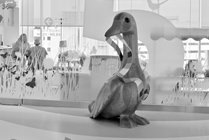
Condition
Thrush and Yeast Infections
Thrush is an infection caused by a fungus called candida. Thrush can affect a child's mouth or diaper area. Oral thrush begins as flat white spots and come together to form patches. These spots are often mistaken for "milk patches." Candida in the diaper area can cause a red rash with tiny blisters.
Article
Microarray Analysis Test
The microarray analysis test is used to find out if your child has a medical condition caused by a missing or extra piece of chromosome material. This test is also known by several other names, such as chromosomal microarray, whole genome microarray, array comparative genomic hybridization or SNP microarray.
Article
Allergy Skin Testing
If your child is being seen for possible allergies, asthma, frequent infections or stuffy nose, allergy skin testing may be recommended. Testing can help find out what "allergen" causes the symptoms. It could be something breathed in, touched, or eaten.
Article
Colonoscopy with General Anesthesia: Infants and Toddlers
This Helping Hand™ is about how colonoscopies are done, how to prep for one, and what to expect for infants and toddlers.
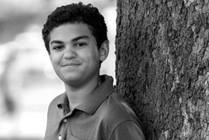
Condition
Tinea Versicolor
Tinea versicolor (TIN ee uh VUHR sih kuhl er) is a common rash caused by the overgrowth of microscopic yeast on the skin's surface. The rash looks like small, scaly spots.
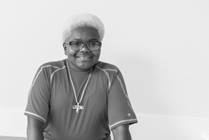
Condition
Nosebleeds
In this Helping Hand™, we discuss nosebleeds. Also known as epistaxis, nosebleeds occur when small and delicate blood vessels (capillaries) in the lining of the nose break and bleed. There are many things you can do to stop a nosebleed. If your child’s nosebleed does not stop, call your doctor.

Specialty
Occupational Therapy
Occupational Therapy focuses on facilitating development, enhancing function and maximizing independence in all daily life activities.
Article
Moving from Pediatric to Adult Care: Finding a Doctor
Take the big step in moving from Nationwide Children's Hospital to a provider that sees adults with this Helping Hand.
Scabies
Scabies is a skin condition caused by a mite.

Condition
Jeune's Syndrome
Jeune's Syndrome is a form of congenital dwarfism causing children to have a deformity of their chest wall. Learn more about signs, symptoms, and treatment.
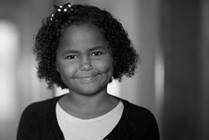
Specialty
Emergency Medicine
The Division of Emergency Medicine at Nationwide Children’s Hospital staffs two Emergency Departments, seven Urgent Care locations and the Psychiatric Crisis Department. Our team is comprised of pediatric emergency medicine sub specialists, general pediatricians and nurse practitioners.

Condition
Vaginal Anomalies
Vaginal anomalies are disorders that involve abnormally formed or absent vaginas. These include: vaginal agenesis, imperforate hymen, septate hymen, transverse vaginal septum and transverse vaginal septum. These occur in about 5% of females with an anorectal malformation/imperforate anus.
Article
Bone Density Scanning (DEXA DXA)
Prepare for your child's bone density scan with this Helping Hand.
Pediatric Trigger Thumb
Pediatric trigger thumb (PTT) is also called a flexion contracture of the IP joint. It is a condition that affects the movement of the thumb in children. In PTT, a tendon cannot slide back and forth through the ligament and the thumb gets stuck in a bent (flexed) position.

Condition
Enlarged Lymph Nodes
Hundreds of these lymph nodes are present in your child’s neck and face. When an infection is present, lymph nodes can become enlarged as an immune response is mounted.

Specialty
Movement Disorders Clinic
Pediatric movement disorders are complex. They require specialized care as children's bodies and brains develop. Nationwide Children's has one of the few pediatric movement disorders clinics in the U.S. and is staffed with a specially trained pediatric movement disorders neurologist.
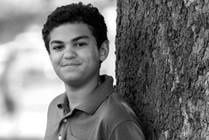
Condition
Pulmonary Arterial Hypertension (PAH)
Pulmonary hypertension is a rare lung disease in which the blood pressure in the pulmonary arteries are high.
Gastroschisis
Gastroschisis is a defect in the abdominal wall. Part of the intestine is outside of the baby's body, rather than inside the abdomen.

Blog
How to Squat Safely: Correct Form for Maximum Effectiveness
One of the most effective exercises is the squat, but when done incorrectly squatting can lead to many issues inside and outside of the weight room.
Rubella
Rubella, also known as German measles, is an illness caused by a virus.
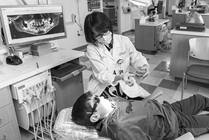
Specialty
Orthodontic Treatment Program
Facial differences can impact a child’s physical, social and emotional development. The Orthodontic Treatment Program offers a compassionate approach to comprehensive care, provided by experts who understand the dental development of children as they grow.
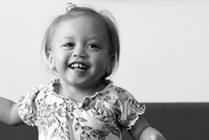
Condition
Hemangioma and Vascular Malformations
The treatment of a hemangioma is usually observation. Some hemangiomas can cause problems if they bleed or press on important nearby structures, such as the eye or the upper airway. Venous malformations, lymphatic malformations and arteriovenous malformations require a multidisciplinary approach.

Condition
Active Tuberculosis Disease
In this Helping Hand™, we discuss Tuberculosis (TB). Active TB disease is contagious. It is most often spread through the air. The standard of care for treatment of active TB is daily administration of medicines from health department nurses.
Article
Fine Needle Aspiration (FNA) Thyroid Biopsy
The doctor has seen or felt a nodule or bump on your child’s thyroid. The ultrasound confirmed the presence of a nodule. Now it is time to take some fluid from inside the nodule and get it tested.
Hidradenitis Supperativa (HS)
Hidradenitis suppurativa (HS) is a long-term (chronic) skin condition. Plugged pores and red, tender bumps or boils begin deep in the skin around hair follicles that contain specific sweat glands called apocrine glands. The tender bumps often enlarge, break open and drain pus.
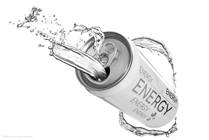
Blog
Caffeine Poisoning: What Parents Need to Know
As caffeine consumption becomes more popular in the form of energy drinks, energy shots, and even caffeine powders, it’s important for parents to be aware of the risks associated with these products, especially for young children.
Article
Dental: Oral Sedation
Sedation can help your child feel less anxious, nervous or afraid, be more comfortable and stay still during the procedure.

Condition
Asthma
This Helping Hand™ covers asthma, which is a lung disease that can cause breathing problems. If your child has asthma, the airways in their lungs overreact to certain things, called triggers.
Rotavirus
Rotavirus (ROE-tuh-vie-russ) is a contagious illness caused by a virus.
Food Poisoning
When people eat tainted food, they can develop anything from a mild illness to a serious disease. Germs that cause food poisoning include Campylobacter, E-Coli, Salmonella and Shigella.

Blog
Vaginal Agenesis: What Is It?
Agenesis is a medical word that means a body part never formed before birth. The term vaginal agenesis means that the female does not have a vagina because it never formed. Vaginal agenesis affects about one in every 5,000 females.
Article
Cast: Hip Spica
A hip spica cast keeps your child's pelvis and one or both legs from moving. This type of cast is used if a child has a broken bone in the thigh or has had hip surgery. The cast holds your child's leg(s) in the right position for healing. It is made of Fiberglas® casting tape. It will be put on in the operating room.
Article
Medical Tutorial
Treatment for all Jeune's patients begins with a series of tests by our multidisciplinary team of Jeune's specialists. Less severe cases of Jeune's are typically then treated with various forms of medical support for the lungs.

Condition
All About Surgeries and Procedures
To prepare for a surgery or procedure at Nationwide Children's Hospital, we would like to tell you what to expect before, during, and after surgery.
Article
Monitoring Blood Glucose
Be informed about diabetes. Read this chapter to learn how to properly monitor your blood glucose.
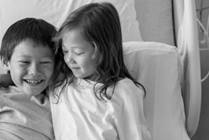
Condition
Atrioventricular Septal Defect (AVSD)
Atrioventricular septal defect (AVSD), also commonly known as endocardial cushion defect or atrioventricular canal defect (AVCD), is a heart condition where there are holes between the heart’s upper and lower chambers, and the valves controlling blood flow may not form correctly.
Supracondylar Humerus Fracture
When your child’s humerus bone is fractured near the elbow area, just above the joint it is called a supracondylar humerus fracture.
Scaphoid Fractures
The wrist is made up of eight bones. The wrist bone below the base of the thumb is known as the scaphoid bone. A fracture (break) of this bone can happen when a person falls onto the outstretched hand.
Article
Use Strength and Preparation to Keep Your Dancer in Top Form
Most young ballerinas can’t wait to take their dancing to the next level, but there are some things to consider so they don’t end up damaging their feet.
Article
Antroduodenal Manometry
An antroduodenal manometry records the pressure waves that are produced in the stomach and small intestine.

Back to School
Going back to school is full of excitement and change. Whether you are sending your child to school for the first time or you are a seasoned pro, Nationwide Children's is always just a click or call away.

Condition
Unicameral Bone Cyst
Although unicameral bone cysts are benign, active unicameral bone cysts can cause bones to weaken or fracture.
Latent Tuberculosis Infection (LTBI)
Tuberculosis, or TB, is the common name for a germ called Mycobacterium tuberculosis. People with latent TB infection (LTBI) do not feel sick. They do not have any symptoms but can potentially develop active TB disease. People with LTBI are not contagious and cannot spread TB to others.

Condition
Spontaneous Pneumothorax
This Helping Hand™ covers a spontaneous pneumothorax, which usually happens when a weak part of the lung is leaking air. These areas are like blisters on the lungs, called blebs. They can burst and leak air into the pleural space.
Toddler's Fracture
A toddler’s fracture is a common fracture in the tibia bone (large bone in the lower leg) of children usually younger than 6 years old. It is most common in children in the early years of walking.
Femoroacetabular Impingement
Femoroacetabular impingement (FAI) is a condition where extra bone grows on the bone(s) within the hip joint.
Article
Inhaled Corticosteroids for Asthma
Properly administer inhaled corticosteroids for asthma with this Helping Hand.

Blog
Why Crawling is Important for Your Baby
Crawling isn’t just a milestone, it’s a powerful step in your baby’s development. From building upper body strength to boosting sensory and visual skills, discover why crawling is key and how to support it through simple, engaging play.
Article
Important Facts to Know when Taking Opioids
Learn how to keep your child safe when they are taking or around opioids.
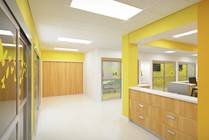
Article
The Day of Surgery
What to expect when you arrive for the day of your surgery at the Westerville Surgery Center.
Article
Propranolol for Hemangiomas
Does your child have a Hemangioma? Learn more about how propranolol can be used to treat it.

Condition
Eosinophilic Esophagitis (EoE)
Eosinophilic esophagitis is a condition in which large numbers of eosinophils, a white blood cell, build up inside the esophagus and cause inflammation.
Non-Hodgkin Lymphoma
Non-Hodgkin's lymphoma (NHL) is a malignant (cancerous) tumor that starts in the lymphatic tissue in the body. There are 2 major forms of NHL: lymphoblastic and non-lymphoblastic lymphoma.

Specialty
Physical Therapy
Physical Therapy refers to the treatment methods used to develop or restore movement, promote healing and function and educate children and their families.
Article
Medicine Safety - Chemotherapy
Many children need medicine from time to time to treat different illnesses or conditions. Some of these medicines are taken for a short time. Others may be taken for years. Here are some tips for the safe use of medicines.

Condition
Achondroplasia
Achondroplasia is the most common form of short-limb dwarfism. Individuals who have achondroplasia have short limbs but normal trunk height and head size with a prominent forehead. Children with achondroplasia can lead normal lives provided they receive appropriate care by knowledgeable providers.
Article
Resources for Parents and Schools
Access logs, management plans, diabetes care tips and more.
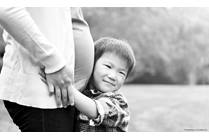
Blog
Birth Spacing: Plan for Health and Safety
Planning for when to have a second, third or even sixth baby can be important to the health of both the birthing person and the new baby. Ideal pregnancy spacing is more than 18 months and less than 5 years.
Article
Frequently Asked Questions
When you or your child are diagnosed with a heart condition you are sure to have questions. Our experts answer some of the most commonly asked questions about heart disease.
Sports Medicine: Patellofemoral Pain Syndrome (PFS)
Patellofemoral Pain Syndrome is pain in the knee due to increased pressure between the kneecap and the thigh bone. Usually a result of poor alignment or sudden growth spurts, this pain may also come from an injury to the knee.
Article
Lead Poisoning: Chelation Therapy
Some children with severe lead poisoning may need a medicine to help remove lead from their blood. Using medicine to take lead out of the blood is called chelation.
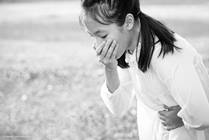
Blog
Understanding Food Poisoning: A Guide for Parents
Scraped knees and bouts of the common cold are frequent concerns for parents, but there are plenty of other dangers lurking about. One of these is food poisoning, a condition whose source lies in undercooked hamburgers and unwashed produce.
Article
Angiogram
Learn more about an angiogram, also called an arteriogram, which is a test that is done to study the size and shape of your child's blood vessels.

Article
Job Shadowing and Internships
Learn more about job shadowing and internship opportunities for high school and college students.

Article
Visiting the Emergency Room
When you know about emergency services at Nationwide Children's Hospital, you will be prepared if your child needs unexpected emergency medical care.
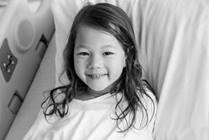
Condition
Elevated Liver Enzymes
Elevated (too high) levels of liver enzymes are a warning sign that something might be harming the liver. Two of these enzymes are alanine aminotransferase (ALT) and aspartate aminotransferase (AST). Symptoms of elevated liver enzymes may include jaundice and swelling of the abdomen, arms or legs.

Condition
Diarrhea
Diarrhea (loose, watery bowel movements) is a common problem in young children. It is usually caused by a virus. It can also be caused by bacteria, something that the child eats or drinks (like too much fruit juice) or starting a new medicine. It rarely means a child has a serious illness.
Article
Prednisone and Prednisolone
This Helping Hand™ explains how the medicines prednisone and prednisolone reduce swelling (inflammation) and help your immune system calm down. They're often used to treat things like asthma, allergies, arthritis, and other conditions.
Article
Treatment
There is no cure for Cerebral Palsy, but many treatments can reduce the effects of CP and also help children learn ways to adapt.
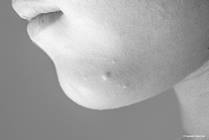
Blog
Molluscum Contagiosum: What You Need to Know
Despite its big, scary-sounding name, molluscum contagiosum is a common and relatively harmless skin condition seen in many children. It comes in the form of bumps that range in size from a pinhead to a pencil eraser.
Crush Injuries of the Fingertip
Crush injuries of a fingertip or the tip of a toe are common in children. They can happen when a finger is slammed in a door, a finger or toe is stepped on, or if a heavy object falls on a nail with great force.
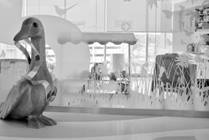
Condition
Gastroschisis
When the muscles and skin fail to form normally in the abdominal wall, this results in an abdominal wall defect. Gastroschisis is the most common of the abdominal wall defects. Babies born with gastroschisis have a hole in the abdominal wall.

Condition
Ependymoma
Ependymomas are a type of a tumor that form in the brain or spinal cord (central nervous system) as a result of abnormal growth of ependymal cells.
Gonorrhea: Expedited Partner Therapy (EPT)
Your partner was diagnosed with a sexually transmitted infection (STI) called gonorrhea. You may also be infected. This infection is serious but can be easily treated with antibiotics.

Condition
Spina Bifida and Myelomeningocele
Spina bifida is a type of neural tube defect, which is a problem with the spinal cord or the structures that cover it.

Blog
Keeping Your Family Safe After an Abusive Relationship
Domestic violence is a complex issue that affects more than just two intimate partners. Children may also be direct victims, especially of ongoing coercive control. Children experience abuse the same ways that adults do – feeling confused and afraid, and even entrapped by the perpetrator.
Article
Cleft Palate Repair: The Surgery
What to expect if your child is having surgery to repair his or her cleft lip.
Article
The ABCs of Blister Care
We have all undoubtedly had a blister at one point and will more than likely encounter them again. Though blisters may be nagging they can be prevented. The key to blister success is prevention and proper treatment.

Blog
Primary Ovarian Insufficiency: Teenagers in Menopause
Primary ovarian insufficiency means that the ovaries have stopped working at a younger age than typical. It used to be called premature ovarian failure and is often called premature menopause. In POI, the ovaries stop producing hormones and eggs, resulting in hormone deficiency and infertility.
Article
Childhood Cancer Awareness Month
Learn how Nationwide Children's Hospital is participating in Childhood Cancer Awareness Month.
Article
The Medicine Program
The Medicine Program at CCPR is part of the Bowel Management Program for children with constipation and slow colon. This will help children with bowel control and toilet training.

Condition
Tricuspid Atresia
Tricuspid atresia, also sometimes called hypoplastic right heart, is a heart defect where the valve between the heart’s right atrium and right ventricle doesn’t form. Most babies with tricuspid atresia will need many heart surgeries over their lifetime.
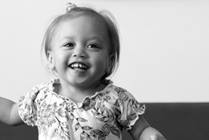
Condition
Gastroesophageal Reflux
Gastroesophageal reflux, also known as chalasia or spitting up, is so common that it should be considered normal for babies. In infants, the sphincter that keeps food in the stomach is not as strong, so some formula or food can come back up. Reflux can cause heartburn which may make the baby fussy.

Blog
You Can Change the Future of 3D Printing
3D printing: If you haven’t heard of it, you’re either blissfully insulated from today’s media or a purposeful avoider of trendy buzzwords. And if you fall into one of these camps, you’re probably one of the few who can help this technology out of a current rut.

Condition
High-Grade Gliomas
High-grade gliomas are fast-growing cancers that form in the brain or spinal cord. Surgery, radiation, and targeted therapies can help. High-grade gliomas are more aggressive and can grow quickly. They are the second most common type of malignant brain tumor in children.
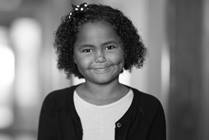
Specialty
Cleft Lip and Palate Center
Our center cares for children with cleft lip and palate from a nationally recognized team including experts from plastic surgery, oral and maxillofacial surgery, orthodontics, otolaryngology (ENT), speech-language pathology, nursing, dentistry, social work, audiology, genetics and psychology.
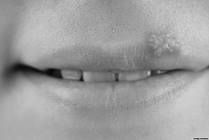
Blog
What You Need to Know About Herpes Mouth Sores
If you have experienced a cold sore, you are already familiar with herpes simplex virus type 1 (HSV1). But did you know that cold sore actually began much earlier, typically during your toddler years?

Condition
Marfan Syndrome
Marfan Syndrome is an inherited disorder of connective tissue caused by genetic mutations that result in the dysregulation of the proteins of the extracellular matrix (fibrillin). The diagnosis is based on signs, family history, and results of diagnostic tests.

Condition
Alagille Syndrome
Doctors in the Pancreas and Liver Care Center can help treat Alagille syndrome, a genetic disorder that primarily involves a mutation in the gene called JAG1. It affects one in every 30,000 to 70,000 live births and can involve multiple organ systems including the liver, the heart, bones, eyes, kidneys, pancreas and brain.

Condition
Vomiting
Vomiting (throwing up) is most often caused by a virus or stomach bug. Some serious illnesses may also cause vomiting. Vomiting caused by a virus usually lasts only a couple of days. It can often be treated at home.

Blog
Dance Injuries: From Rehab to Rehearsal
When a medical professional is actively involved and there is appropriate communication, young dancers are less likely to miss dance time, and there is a reduced injury rate. Learn what to do if you’re a dancer with an injury.

Blog
Teen Drivers: 8 Safety Tips
Nothing is scarier than a teen driver. Or is it a driver using their cellphone on the highway? Or someone balancing food on their lap and barely a hand on the wheel while they simultaneously try to eat, not spill, and operate a vehicle?
Article
Medicines After Kidney Transplant
Taking your medicines and understanding what each one does will help keep your new kidney healthy.

Specialty
Comprehensive Sarcoma Program
Nationwide Children's Pediatric Bone Tumor Clinic is one of the few clinics in the country that utilizes the newest surgical procedure, Limb Preservation, to treat sarcomas.
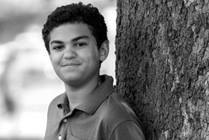
Condition
Truncus Arteriosus
Truncus arteriosus is a rare heart defect where only one large blood vessel forms instead of two. It can be treated with surgery.

Blog
Negative Behavior as a Form of Communication: How to Be a Trauma-Informed Parent
Every child experiences stress. It’s important to understand children’s stress can become toxic if it’s not acknowledged and addressed.

Condition
Pilonidal Disease
This Helping Hand™ is about pilonidal disease, which is a common skin condition that happens between the buttocks.

Blog
What Types of Birth Control Are 99% Effective?
Parents are probably familiar with the birth control pill, but there are other options of birth control available for your teen that don’t have to be taken every day.
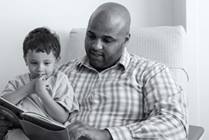
Condition
Autoimmune Hepatitis
Autoimmune hepatitis happens when something goes wrong with the body’s immune system. In autoimmune hepatitis, the immune system attacks normal liver cells. This causes damage that makes it hard for the liver to work properly.

Blog
4 Things to Know About Caring for Your Child’s Cast
Up to 40% of girls and as many as 50% of boys experience a broken bone during childhood. Here are four things you should know about casts and how to care for them.
News
International Symposium Explores New Hybrid Approach to Congenital Heart Disease
Interventional cardiologists and cardiothoracic surgeons from throughout the United States, North and South America, Europe, Australia and Asia will gather at Columbus Childrens Hospital from June 28-30, 2006, for the inaugural International Symposium on the Hybrid Approach to Congenital Heart
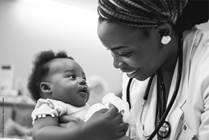
Blog
Turner Syndrome: Unique as a Butterfly
Turner Syndrome is a genetic condition, a difference in the number or type of sex chromosomes, in those assigned female at birth.

Condition
Pulmonary Atresia
Pulmonary atresia is a heart defect in children that affects blood flow to the lungs. It can be treated with surgery or catheterization
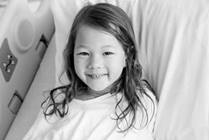
Condition
Interrupted Aortic Arch (IAA)
Interrupted aortic arch is a heart condition where the aorta doesn't form completely. This affects blood flow and will require open heart surgery to treat it.

Condition
Uterine Didelphys
Uterine didelphys is a disorder present before birth in which a female develops two uteruses instead of one. Treatment could be needed if symptoms occur such as unusual pressure or cramping pain before or during a menstrual period or an abnormally high amount of bleeding during a menstrual period.
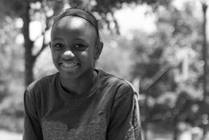
Condition
Osteosarcoma
Osteosarcoma is the most common form of bone cancer in young people under age 20. Tumors are lumps or masses and usually affects the long bones near the knee or the shoulder.
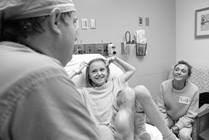
Article
Tissue Expansion
Tissue expansion involves the stretching of skin and soft tissue. It is done before reconstructive surgery to replace skin that has been burned, injured, or that has a large birthmark.

Blog
Get a Black Belt in Giving Medicine
So you waited to see the doctor, then waited in line for the pharmacist to give you your medicine, and now it’s time to give it to your kids. Maybe you got the “yummy pink medicine,” but not all medicines are yummy or pink.

Blog
Healthy Eating for Young Athletes
Eating right is an important part of life for young athletes. Getting the proper nutrition before and after a workout, practice, or the big game is essential to helping kids prevent injury and perform at an optimal level.
News
International Symposium Explores Hybrid Approach to Congenital Heart Disease
Interventional cardiologists and cardiothoracic surgeons from throughout the United States, North and South America, Europe, Australia and Asia will gather at Columbus Childrens Hospital from June 27-29, 2007, for the second International Symposium on the Hybrid Approach to Congenital Heart Disease
Legg Calve Perthes Disease
Legg Calve Perthes Disease, also known as Perthes or LCP, is a condition affecting one or both hips typically in children ages 3 to 10 years old
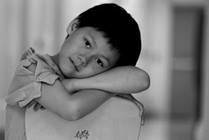
Condition
Dehydration
There are many reasons why children can get dried out or dehydrated. A child can lose too much liquid from the body from diarrhea, vomiting or fever. If the child has mouth sores or a bellyache, they may refuse to drink enough. Babies and younger children are at greater risk.

Blog
Diagnostic Ultrasound: Evaluating Athletes at a Faster Pace
While most people think of ultrasound as a device used during pregnancy, it is an important tool used by many medical specialties – including sports medicine.
Article
Jackson Pratt Drainage Tube
The Jackson Pratt drain is a special tube put in place near the site of surgery to prevent body fluid from collecting. It pulls the fluid into a bulb by suction.

Blog
Should Parents with Diabetes Breastfeed?
Parents who have diabetes of any kind are similar to other new parents in many ways. But according to a study here at Nationwide Children’s Hospital, they are less likely to breastfeed their newborn baby in the hospital and continue breastfeeding for at least two months.

Blog
What You Should Know About Long COVID
Medical providers across the nation are seeing an increase in cases of what is being called long, or long-haul COVID. Here is what you need to know about the condition, which refers to cases with continuing symptoms that last beyond a few weeks.

Blog
Why Your Child Needs a Support System and How to Build One
When people say it takes a village to raise a child, it really does! Support systems play a vital role in your child's mental and physical health as they grow.

Article
Dale Jr Foundation
The Dale and Amy Earnhardt Fund supports Nationwide Children’s courageous patients and their families in the area of pediatric injury rehabilitation, research and prevention, helping patients and families rehabilitate from brain injuries, head and spinal cord injuries, and other physically disabling conditions and injuries.

Condition
Allergies to Foods
A food allergy occurs when the body’s immune system overreacts to certain foods. The body then makes antibodies to that food and an allergic reaction occurs. Anaphylaxis is a severe and possibly life-threatening reaction. If a severe reaction occurs, use the EpiPen and call 9-1-1 immediately.

Condition
Soft Tissue Sarcomas
Soft tissue sarcomas start as painless lumps or swellings, but they are cancerous tumors. They occur most commonly in the arms, legs, chest and abdomen in children.
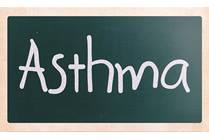
Blog
Back to School with Asthma
On average, 3 children in every classroom in America have asthma. While there is no cure, almost everyone with asthma can control their symptoms and lead a normal life without too many restrictions.
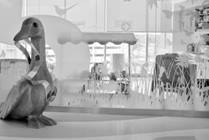
Condition
Abdominal / Duplication Cysts
Abdominal cyst is a general term used to describe a rare, congenital birth defect that causes an irregular mass of tissue to grow in a baby’s abdomen. Growths can appear anywhere along the gastrointestinal tract or reproductive organs like the ovaries. Surgery is the most common treatment for cysts.
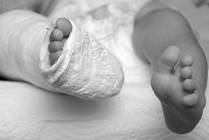
Article
Cast and Splint Care
Your child needs a cast or splint. The cast or splint keeps the injured area from moving while it heals. Movement can cause pain, delay healing or make the injury worse. Some casts are waterproof. Your doctor will tell you the type that has been put on your child.

Condition
Dermoid Cyst
Dermoid cysts, also called epidermoid cysts or dermal/epidermal inclusion cysts, are masses in children and adults, most commonly found in the head, face, neck and upper chest. Dermoid cyst ablation is a minimally-invasive procedure that is an alternative to surgically removing the dermoid cyst.
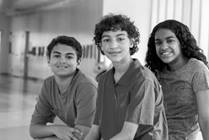
Condition
Neuroblastoma
Neuroblastoma is a rare cancer that develops from immature nerve cells. It most commonly arises in and around the adrenal glands, but can also develop in other areas of the body.

Blog
Monkeypox: What Parents Need to Know
While we are still dealing with COVID-19, spread of another virus has been detected in the United States. Although monkeypox is uncommon, we need to be informed to protect against infection.
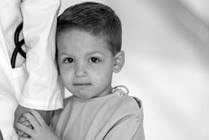
Specialty
Pancreas Care
Our center provides comprehensive multidisciplinary care for patients suffering from diseases of the pancreas. Our multidisciplinary team focuses on treating the patient as a whole to achieve the best possible outcomes and quality of life.

Condition
Vaginal Atresia
Vaginal atresia is a condition a child is born with. The vagina might not be formed completely, meaning it is closed or absent. Treatment includes dilators or surgery.

Blog
Preventing Skin Infections in Wrestling
Wrestlers use strength, agility and finesse to wrestle for victory against their opponent. In every practice and match, skin-to-skin contact between two players is inevitable. This environment of skin and sweat is a breeding pool for organisms such as bacteria, fungus, and viruses.
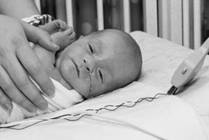
Condition
Ebstein's Anomaly
Ebstein’s anomaly is a heart problem that some people are born with. It means the tricuspid valve, which helps control blood flow in the heart, doesn’t work right. Most babies with severe Ebstein’s need surgery at some point.
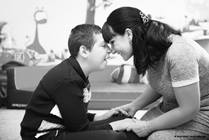
Blog
Disaster Response for Families of Children with Disabilities
Parents of children with disabilities and medical needs may find disaster preparedness overwhelming, and sometimes, they may need help finding and collecting resources. All families need to be ready for emergencies and disasters, and for families of children with disabilities, extra prepping may be necessary.
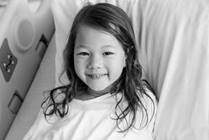
Condition
Double Outlet Right Ventricle (DORV)
Double outlet right ventricle (DORV) is a congenital heart defect where the two great arteries are both attached to the right ventricle. In DORV, the normally separated oxygen-rich arterial blood and oxygen-poor venous blood is mixed prior to leaving the heart.
Article
Allowing Youth Sports to be Child's Play
It has been documented that physical activity is necessary for normal growth in children. However, when the activity level becomes too intense, or excessive, in too short a time period tissue breakdown and injury can occur.

Specialty
School Health Services
Our providers work on-site at schools across Ohio to provide primary care services, mental health counseling, asthma therapy care, vision care, dental care and more.
News
International Symposium Hosted by Nationwide Childrens Hospital Explores Hybrid Approach to Congenital Heart Disease
Interventional cardiologists and cardiothoracic surgeons throughout the United States and the world, who treat patients with congenital heart disease, will gather at the Hilton Columbus at Easton Town Center August 31-September 2, 2010 for the International Symposium on the Hybrid Approach to

Condition
Non-Alcoholic Fatty Liver Disease
Non-alcoholic fatty liver disease (NAFLD) is the most common chronic liver disease in American children. NAFLD occurs when too much fat builds up in the liver. Excess fat in the liver and elsewhere in the body makes it harder for the liver to work well. Over time, NAFLD can cause other health issues.
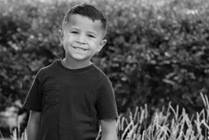
Condition
Low-Grade Gliomas
Low-grade gliomas are a type of brain tumor that grow slowly and are less aggressive than high-grade gliomas. They can cause seizures, headaches, and other symptoms. Treatment options include surgery, radiation therapy, and chemotherapy.

Blog
My Son's Journey With Spina Bifida
Guest post written by Megan Mompher, mom to Blake I have never been as scared in my life as the moment when I found out my unborn son had spina bifida. Blake’s future was unknown and my husband and I had no idea what to expect.

Blog
Autism Awareness Day: A Time for Acceptance and Action
April 2 marks the 11th annual World Autism Awareness Day – a day to recognize people living with autism.
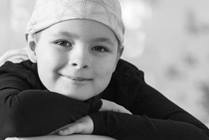
Specialty
Hematology, Oncology & Blood and Marrow Transplant
Our hematology, oncology, and blood and marrow transplant teams treat patients with all forms of cancer and blood disorders. Our specialists participate in collaborative research across the country and around the world to bring innovative treatments to our patients.

Condition
Double-Inlet Left Ventricle
Double-inlet left ventricle (DILV) is a heart defect where both upper chambers send blood to one lower chamber, causing mixed blood flow to the body and lungs. Most babies with DILV will need many heart surgeries over their lifetime. Most surgeries are successful, but your child will need cardiology care for life.

Condition
Constipation
Many children have constipation at one time or another. Constipation can be defined as more than three days between bowel movements; stools that are large, hard and painful to pass; or incomplete bowel movements and stool backs up in the bowel despite daily bowel movements.
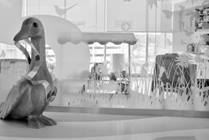
Condition
Dandy-Walker Syndrome
Dandy-Walker Syndrome (DWS) is a congenital condition where the cerebellum does not develop normally. The cerebellum is an area at the back of the brain that controls movement and balance. With DWS, parts of the cerebellum may never develop, may be very small, or may become filled with fluid.

Condition
Astrocytoma (aka Glioma)
Astrocytoma is a type of tumor that can grow in the brain or spinal cord. It can be treated with surgery, radiation therapy, or other treatments depending on the type of tumor.
News
More Than a Cold, Doctors Warn of a Common Respiratory Illness in Children
Like most moms, Shanisty Ireland had dealt with many bugs being passed between her three children. Last winter, she thought her newborn, Adam, had the same cold that had caused her older children to cough and sniffle.
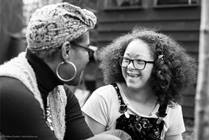
Blog
Down Syndrome Regression Disorder: Not One-Size-Fits-All
For as much as we think we know about Down syndrome, there is still more and more that we are learning. In fact, we are sometimes explaining things to families at the same time we are learning them.
Article
Common Terms
You are going to hear a lot of medical jargon in the NICU. You can always ask question but this list of common terms will be a great guide to reference during your stay.
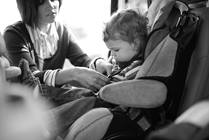
Blog
Car Seat Rules Are Changing-What You Need To Know
There is nothing more overwhelming to a newly pregnant woman than walking into a baby super store. I like shopping, but I was on the verge of a full- blown panic attack when I went to register for my first child and the woman behind the counter handed me a folder of everything you

Blog
Kids and Self-Injury: What Parents Need to Know
Self-injury is the act of physically hurting oneself without the intent to die. It is a sign of emotional distress and indicates a person has a lack of healthy coping skills. The most common forms of self-injury are cutting, burning, or scratching the skin and bruising the body tissue.
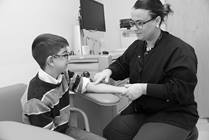
Blog
Food Sensitivity Tests: The Pitfalls of Home Testing Kits
At-home tests are being marketed as a convenient way to determine food sensitivity. Read what our allergy expert has to say about what these tests can and can't do.
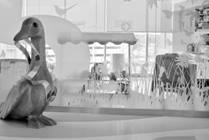
Condition
Congenital Diaphragmatic Hernia
Congenital diaphragmatic hernia (CDH), is a rare congenital condition where the muscles in the diaphragm do not grow together, leaving a hole. The hole allows the intestines and other organs (stomach, liver) to move up into the baby’s chest. When this happens, it makes it hard for the lungs to grow.
Specialty
Robot-Assisted Surgery
Robot- or robotic-assisted surgery provides a minimally invasive option in several pediatric specialties. These types of procedures provide surgeons additional precision and control during more complicated surgeries.

Article
Columbus Youth Helmet Ordinance
In the city of Columbus, children younger than 18 years of age are required by law to wear a helmet when they are participating in wheeled sports. Violators may be issued a citation.
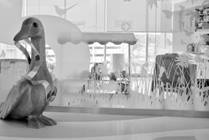
Condition
Anencephaly
Anencephaly is a condition present at birth that affects the formation of the brain and the skull bones that surround the head. Anencephaly results in minimal development of the brain. Often, the brain lacks part or all of the cerebrum. There is no cure or standard medical treatment for anencephaly.

Blog
The Mental Load of Moms
Who is in charge of “remembering,” otherwise known as “the mental load?” Historically, mothers have mostly been the ones to take care of all the details.
News
International Symposium Explores Hybrid Approach to Congenital Heart Disease
Interventional cardiologists and cardiothoracic surgeons throughout the United States, North and South America, Europe, Asia and Australia, who treat patients with congenital heart disease, will gather at Nationwide Childrens Hospital June 16-18, 2008 for the third International Symposium on the

“Roadmap” to Community Investment Illustrates What’s Possible
Nationwide Children’s Hospital may now be a model for health systems that want to invest upstream in its communities, but the road there was more than 25 years in the making. Nationwide Children’s CEO Tim Robinson recently traced the hospital’s “more evolutionary than revolutionary” journey to its current community investment strategies in conversation with Robin Hacke, executive director of the Center for Community Investment (CCI).
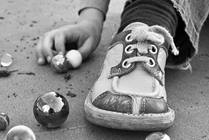
Condition
Hereditary Multiple Osteochondromas
Hereditary multiple osteochondromas (HMO) is a rare genetic disorder. Children develop non-cancerous (benign) bone tumors called osteochondromas. Knees, shoulders, ankles and wrists are the most common sites for osteochondromas.
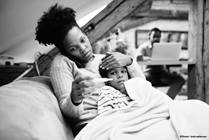
Blog
Tylenol Shortage
Families are having difficulties finding the liquid forms of acetaminophen and ibuprofen. If you cannot find brand name acetaminophen or ibuprofen, you can use generic and store brands as they are safe and effective.
Article
Seizures and Epilepsy
Has your child had a seizure or been diagnosed with epilepsy? This information will give you a basic understanding of your child’s condition.
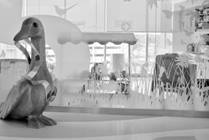
Condition
Encephalocele
Encephalocele is a rare congenital condition where the neural tube does not close and causes a sac-like bulge with brain tissue and spinal fluid that pokes through the skull. Encephalocele is often found during a prenatal ultrasound. Treatment depends on the location of the encephalocele on the skull.

Blog
Kids and Nutrition: Making Vegetables Taste Good
Getting kids to eat vegetables is not always an easy task. The good news? We can make them taste good! If you have a picky eater, here are some recipes to help you to just that.

Blog
Endometriosis in Teens and Adolescents: More Than Just Cramps
Endometriosis is a condition in which the menstrual tissue is found outside the uterus, within the pelvis. Girls who have a mother, sister or aunt with endometriosis have an almost 10 times increased chance of developing it.
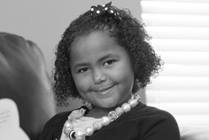
Condition
Transposition of the Great Arteries (TGA)
Transposition of the Great Arteries is a heart condition where arteries switch places and oxygenated blood goes back to lungs, not body. It can be treated with surgery and catheterization.

Condition
Aortic Stenosis
Aortic stenosis is a heart condition where the valve that controls blood flow from the heart to the body is too narrow. It can be treated with surgery or catheterization.

Condition
Congenital Heart Defects
Congenital heart defects are problems with the heart that are present at birth. Some are simple and don’t need treatment, while others require surgery.

Blog
Baby’s Head Shape: Should You Be Concerned?
Bringing a baby home from the hospital can be a scary time for a parent as they navigate the first few months as an expanded family. The list of things to worry about as a child develops can seem endless, and baby’s head shape is a common item on that list.

Condition
Total Anomalous Pulmonary Venous Return (TAPVR)
Total anomalous pulmonary venous return (TAPVR) is a condition where the blood vessels in the lungs, called the pulmonary veins, are not attached to the heart in the right place. Because of this, the body can’t get enough oxygen.
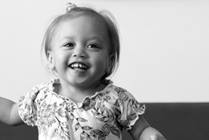
Condition
Pulmonary Stenosis
Pulmonary stenosis is a heart defect in children that makes it harder for blood to flow. It can be treated with surgery or catheterization.
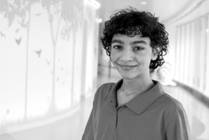
Condition
Scoliosis
Scoliosis (skoe-lee-OH-sis) is a deformity of the spine which results in a rotation and curve of the spine.
Article
Seizure Information for Parents
Your child had a seizure. What do you do now? Learn more about safety, treatment and tips on living with seizures and epilepsy.
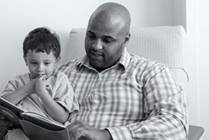
Condition
Congenitally Corrected Transposition of the Great Vessels
Congenitally corrected transposition of the great vessels (CCTGA; l-TGA) is an uncommon congenital heart abnormality, where the receiving chambers (atria) are connected to their opposite pumping chambers (ventricles) because the ventricles are switched from their normal anatomic positions.
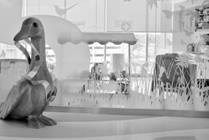
Condition
Giant Neck Mass
A giant neck mass is an abnormal growth of the neck. There are two different types of masses including cervical teratomas and lymphatic malformations. The cause of it is unknown, but it can be treated.

Blog
"To the Bone" and Eating Disorder Treatment: Did Netflix Get it Right?
The Netflix movie To the Bone portrays a semi-autobiographical story about a 20-year-old girl named Ellen and part of her journey through recovery from an eating disorder, Anorexia Nervosa. Overall, this movie seeks to raise awareness about something that doesn’t get enough discussion. But in doing so, it raises many questions.

Condition
Central Nervous System (CNS) Tumor
The central nervous system is made up of the brain and the spinal cord. This system is responsible for sending, receiving and processing information throughout your body, controlling how your body functions. When tumors grow in the central nervous system, they can cause significant symptoms.
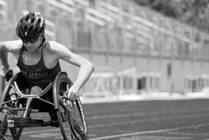
Specialty
The Adaptive Sports Medicine Program
Our program provides specialized resources for young athletes with physical disabilities to help them enter and excel in athletics. We utilize state-of-the-art technology and multidisciplinary care to individualize treatment for each athlete.

Condition
Hypoplastic Left Heart Syndrome
Hypoplastic left heart syndrome (HLHS) is a congenital heart defect where most of the structures on the left side of the heart are small and underdeveloped. The Hybrid approach, developed by surgeons at Nationwide Children's Hospital, is an alternative to Norwood open heart surgery for HLHS.
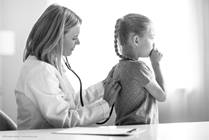
Blog
Community Acquired Pneumonia in Children: What Parents Need to Know
As the seasons change, we often see a rise in respiratory infections among children. One such infection that has been making the rounds is community-acquired pneumonia, usually caused by Mycoplasma pneumoniae.

Condition
Ewing Sarcoma
Ewing sarcoma is a type of bone or soft tissue cancer. It is the second most common tumor of the bone and affects children and young adults.
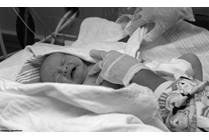
Blog
Hip Dysplasia in Children: Causes, Symptoms and Treatment
For parents, a diagnosis of Developmental Dysplasia of the Hip (DDH) brings a wide range of emotions and responses. Parents want to understand not only the condition, but what the future holds for their child after diagnosis.

Specialty
The Heart Center (Cardiology)
We offer cardiology services, cardiothoracic surgery, interventional cardiology (catheterization) and support for patients with all heart conditions from simple to complex. Pediatric and adult patients with congenital heart disease and acquired cardiomyopathy have access to world-class diagnostics, treatments and research.

Condition
Sacrococcygeal Teratoma (SCT)
Sacrococcygeal teratoma (SCT) is a tumor that forms on a fetus’ tailbone, also called the coccyx. The tumors are usually not cancerous (benign) but can be life-threatening if not treated. SCT is rare, occurring in about 1 in 35,000-40,000 births. They are more common in males than females.
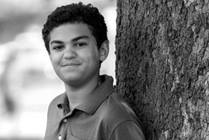
Condition
Epilepsy
Epilepsy is a neurological condition involving the brain that makes people more susceptible to having recurrent unprovoked seizures. The two broad categories of epileptic seizures are generalized and partial seizures.

Condition
Coarctation of the Aorta
Coarctation of the aorta is a heart defect that is present at birth (congenital) in which the aorta is narrowed and results in decreased blood flow to the lower body. The left ventricle (pumping chamber) of the heart must work harder in order to pump blood through the narrowed aorta.

Condition
Tetralogy of Fallot (TOF)
Tetralogy of Fallot is a congenital heart defect that is made up of 4 problems and results in not enough blood flow to the lungs.

Condition
Embryonal Tumor with Multilayered Rosettes (ETMR)
If you are worried about your child’s symptoms or development, reach out to a physician. The sooner your child is diagnosed, the better the chances are of survival.
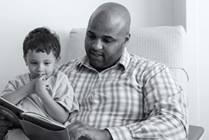
Condition
Anorectal Malformations or Imperforate Anus
Babies born with imperforate anus or anorectal malformation have a condition where the anal opening (where solid waste leaves the body) and rectum do not develop properly.

Condition
Prune Belly Syndrome
Prune belly syndrome (PBS) is a rare condition that affects about 1 in every 50,000 children. Children are born with it. The condition affects belly (abdominal) muscles, bladder and urinary tract, as well as testicles in males. PBS is often found during pregnancy.
News
The Memorial Tournament and Nationwide Childrens Hospital Welcome Nicklaus Childrens Health Care Foundation as Partner
Tournament officials announced today an alliance among the Memorial Tournament, Nationwide Children’s Hospital and Nicklaus Children’s Health Care Foundation to create opportunities for funding and awareness.
Article
Fellowship Experience
The Sports Medicine Fellowship is a one year fellowship at Nationwide Children's Hospital. Fellows will have a broad range of study and a close working relationship with faculty members.
Article
Curriculum
Our Sports Medicine is built on a broad curriculum that gives our fellows the opportunity to practice in different fields. Learn more about our curriculum.
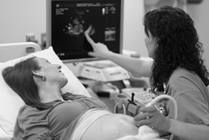
Specialty
The Fetal Center
The Fetal Center offers advanced diagnostic, treatment and recovery options for families facing complex birth defects. We are devoted to improving neonatal outcomes for most fetal complications while supporting you along the way.
Article
News You Can Use
- Patient-centered Care Lies at the Heart of Food Allergy Treatment Center
- Molly Fuchs, MD, Named New Pediatric Urology Department Chief
- 2025 Physician Recognition Awards
- Entrepreneurship Educational Sessions From The Innovation Center

Article
Nursery Safety
The most important job for parents is to keep their child safe from harm. Because newborns will spend most of their time sleeping, parents need to make sure the nursery is a safe place.

Blog
Is Overuse of Baby Food Pouches a Problem?
There may be some concerns with having food pouches as the primary foods that a child is exposed to, based on developmental and sensory skills.
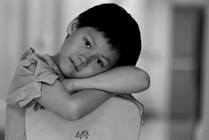
Condition
Hirschsprung Disease
Hirschsprung disease, also known as megacolon, is a congenital condition that causes blockage of the intestine. The blockage is caused by a lack of nerves in the bottom segment of the colon. Children with Hirschsprung disease will need surgery to remove the non-functional segment of the intestine.
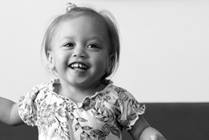
Specialty
Brachial Plexus and Nerve Program
The brachial plexus is a network of nerves that controls the arm, shoulder and hand function. Injury during birth, or later trauma, can leave the arm without feeling or movement. Surgery may be necessary. Our experts are ready to evaluate, educate and provide appropriate interventions.
Article
Billing Q&A
Have questions about your child's bill? Here are answers to our most frequently asked questions.
Article
Pain Treatment Therapy Options
Therapies include medications and medical therapies, psychology, biofeedback, relaxation therapy, imagery, physical therapy, aromatherapy, massage and acupuncture.
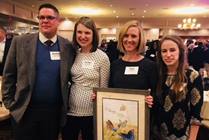
Article
Partners in Care, Partners in Hope
The Family Advisory Council at Nationwide Children's Hospital is proud to award an annual recognition for excellence in family-centered care. Learn more about the award and the most recent recipient.

Condition
Abdominal Pain
Functional abdominal pain is a common problem that interferes with a child’s daily life. Some red flags to look for include weight loss, vomiting, lack of energy and bloody diarrhea. A physician can perform tests to determine the cause of abdominal pain. Treatment plans vary depending on the cause.

Article
Resident Experience
At Nationwide Children's Hospital, we care for, support and mentor our residents. One aspect of that support is a series of monthly and annual development and social events to help you balance your responsibilities, provide mechanisms for your feedback, and just have fun!
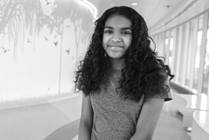
Condition
Seizures and Epilepsy in Children
A seizure occurs when part(s) of the brain receives a burst of abnormal electrical signals that temporarily interrupts normal electrical brain function.
Article
March 2013
Dr. Louise Rodino-Klapac discusses alpha 7 integrin as A therapeutic approach to muscular dystrophy.
Article
Low Maintenance Contraceptives
Low maintenance contraceptives, also called Long Acting Reversible Contraception (LARC,) are the most effective reversible methods of birth control available to reduce unplanned teen pregnancy.
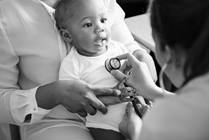
Article
EMS Outreach Program
Nationwide Children's Emergency Medical Services (EMS) Outreach Program provides expertise and leadership for EMS providers in 33 of the 88 counties in Ohio, making our pre-hospital catchment area the largest in the state.

Condition
Cloacal Malformation
Cloacal malformation, sometimes called persistent cloaca, is found in female children where the rectum, vagina and urethra are fused together, creating a single common channel. In developing fetuses, these openings are joined in a sac known as the cloaca. At birth, these openings are normally separate.
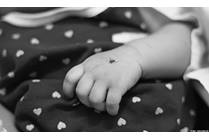
Blog
3 Things You Need to Know About West Nile Virus
West Nile Virus (WNV) is an arthropod-borne virus (arbovirus) spread most frequently through the bite of infected mosquitoes (Culex sp.). Mosquitoes become carriers of WNV after feeding on infected birds and can then transmit the virus to humans through subsequent bites.
Article
Application and Selection
The internship only accepts students currently matriculated in an American Psychological Association or Canadian Psychological Association accredited doctoral program in Clinical, Counseling or School Psychology. Learn more about how to apply if you are eligible.
Article
February 2015
Dr. Kevin Flanigan discusses IRES-Induced Dystrophin as a potential therapy for DMD.
News
Legends Luncheon presented by American Electric Power Foundation shines a bright light on Nicklaus Children’s Health Care Foundation and Nationwide Children’s Hospital alliance
10th annual Nicklaus Youth Spirit Award Recipient honored

Article
Announcements
See the latest announcements about the Center for Injury Research and Policy including information about recent awards, publications, studies, and events.

Article
Physician Careers
Nationwide Children’s Hospital is always looking for excellent board certified and board eligible pediatric physicians to join our Medical Staff.
